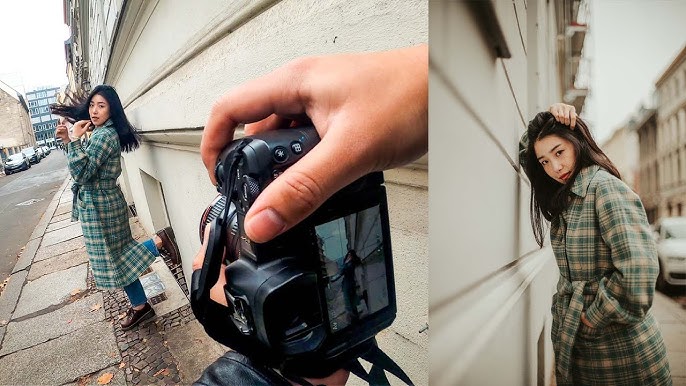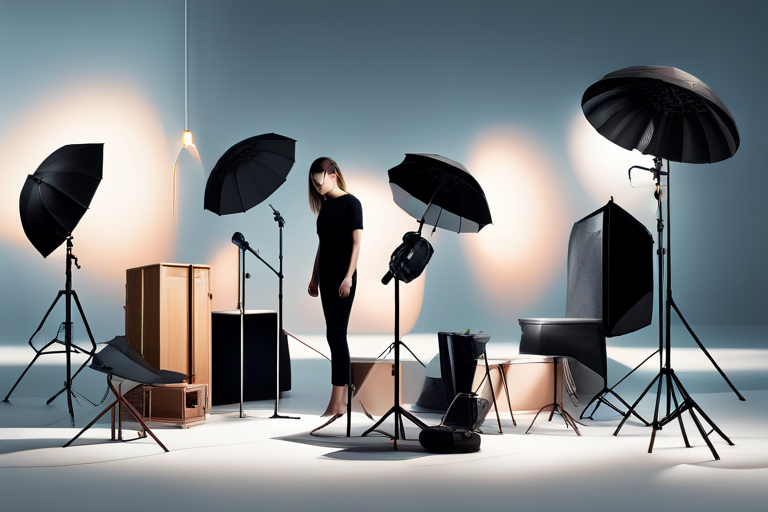Mastering the Lens: Unraveling the Latest Trends and Techniques in Photography

3-12-2024, 07:15 Admin 6 662 0
In the rapidly evolving domain of photography, it's vital to stay ahead of the curve and understand the latest trends and techniques. With the advent of modern technology, photographers across the globe are mastering the lens, weaving magic with unique visions and breakthrough methodologies. This sixth unique article in our series delves further into this captivating world, bringing you fresh insights into the novel trends that are reshaping the face of photography.
One fascinating dimension currently revolutionizing photography is the world of computational photography. Essentially, computational photography leverages smart algorithms that empower the photograph's post-processing. It's implemented through smartphone cameras, intensifying the inherent power of artificial intelligence. Think Google Pixel's Night Sight or Apple's Deep Fusion technology; these features utilize computational photography to enhance the quality of images in low-light conditions or to render high detail in every pixel. Embracing such modern technology aids in optimizing the effectiveness and efficiency of photography, allowing professionals and novices alike to create stunning images effortlessly.
Next, we move to the trend of drone photography, which has opened up a whole new perspective quite literally. Drones, previously used mainly for surveillance, are now mainstream photography equipment. They offer never-seen-before viewpoints that provide a surreal and immersive experience to the viewers. Best utilized in travel, wildlife, and event photography, drones can maximize efficiency by covering large areas within a short time. The DJI Phantom Series and Autel EVO II, for instance, are heralding this exceptional revolution in aerial photography with their high-resolution capability and extended battery life.
The art of photography has always been closely tied to light, and light painting is a technique that's catching on quickly. With the help of modern tools like programmable LED sticks and pixel sticks, photographers are capturing vibrant, mesmerizing images. Light painting allows photographers to blend the real and surreal, creating images that are performance art just as much as they are stills. For instance, the work of the artist Eric Pare demonstrates the innovative applications and potential of light painting.
Moreover, 360-degree photography is a concept that is increasingly gaining traction. Modern smartphones and specialized cameras, such as the Insta360, allow photographers to capture immersive panoramic photos with a click. 360-degree images can amp up the experience for viewers, transporting them directly to the scene, and are becoming instrumental in areas like real estate, tour guides, and virtual reality.
Lastly, the trend of macro photography is being redefined by technological advancements. Devices like the Venus Optics Laowa 24mm f/14 Probe Lens bring the macro world to photographers with impressive detailing and breed a new wave of creativity.
Remaining attuned to these changes, trends, and techniques in photography can drastically enhance efficiencies and extend the boundaries of an artist's creativity. Being open to learning and adapting to these transformations is not optional but rather a necessity for every photographer, fostering growth and excellence in this digital-age art form.
In conclusion, the art of photography is in a dynamic state of flux, invigorated by modern technology. These trends are leading us on an enthralling journey, full of discovery and innovation. As we master the lens, we're proving, yet again, that photography is an art form that encapsulates, reflects, and evolves with our times.
One fascinating dimension currently revolutionizing photography is the world of computational photography. Essentially, computational photography leverages smart algorithms that empower the photograph's post-processing. It's implemented through smartphone cameras, intensifying the inherent power of artificial intelligence. Think Google Pixel's Night Sight or Apple's Deep Fusion technology; these features utilize computational photography to enhance the quality of images in low-light conditions or to render high detail in every pixel. Embracing such modern technology aids in optimizing the effectiveness and efficiency of photography, allowing professionals and novices alike to create stunning images effortlessly.
Next, we move to the trend of drone photography, which has opened up a whole new perspective quite literally. Drones, previously used mainly for surveillance, are now mainstream photography equipment. They offer never-seen-before viewpoints that provide a surreal and immersive experience to the viewers. Best utilized in travel, wildlife, and event photography, drones can maximize efficiency by covering large areas within a short time. The DJI Phantom Series and Autel EVO II, for instance, are heralding this exceptional revolution in aerial photography with their high-resolution capability and extended battery life.
The art of photography has always been closely tied to light, and light painting is a technique that's catching on quickly. With the help of modern tools like programmable LED sticks and pixel sticks, photographers are capturing vibrant, mesmerizing images. Light painting allows photographers to blend the real and surreal, creating images that are performance art just as much as they are stills. For instance, the work of the artist Eric Pare demonstrates the innovative applications and potential of light painting.
Moreover, 360-degree photography is a concept that is increasingly gaining traction. Modern smartphones and specialized cameras, such as the Insta360, allow photographers to capture immersive panoramic photos with a click. 360-degree images can amp up the experience for viewers, transporting them directly to the scene, and are becoming instrumental in areas like real estate, tour guides, and virtual reality.
Lastly, the trend of macro photography is being redefined by technological advancements. Devices like the Venus Optics Laowa 24mm f/14 Probe Lens bring the macro world to photographers with impressive detailing and breed a new wave of creativity.
Remaining attuned to these changes, trends, and techniques in photography can drastically enhance efficiencies and extend the boundaries of an artist's creativity. Being open to learning and adapting to these transformations is not optional but rather a necessity for every photographer, fostering growth and excellence in this digital-age art form.
In conclusion, the art of photography is in a dynamic state of flux, invigorated by modern technology. These trends are leading us on an enthralling journey, full of discovery and innovation. As we master the lens, we're proving, yet again, that photography is an art form that encapsulates, reflects, and evolves with our times.
Related News
Leave a Comment


